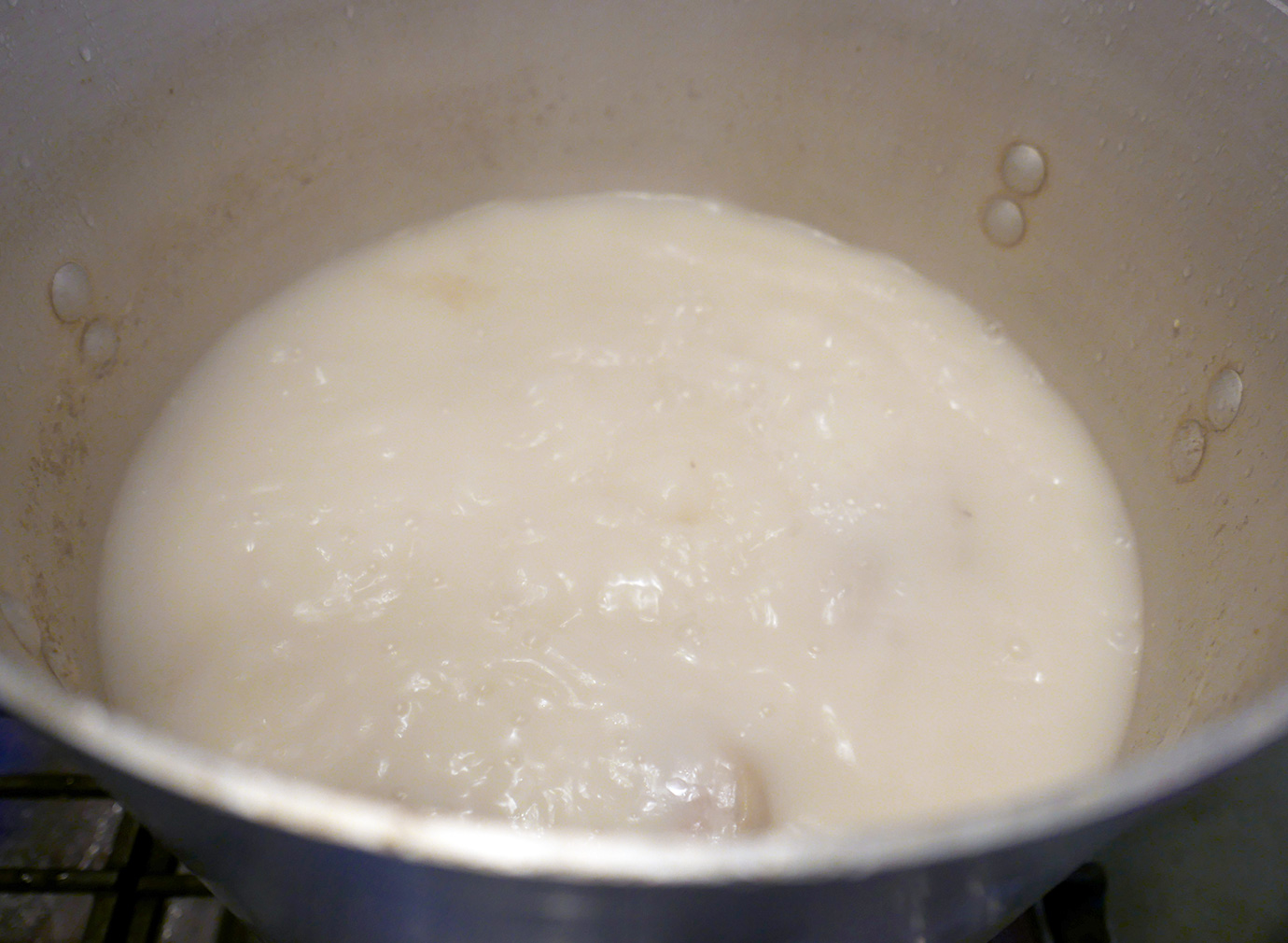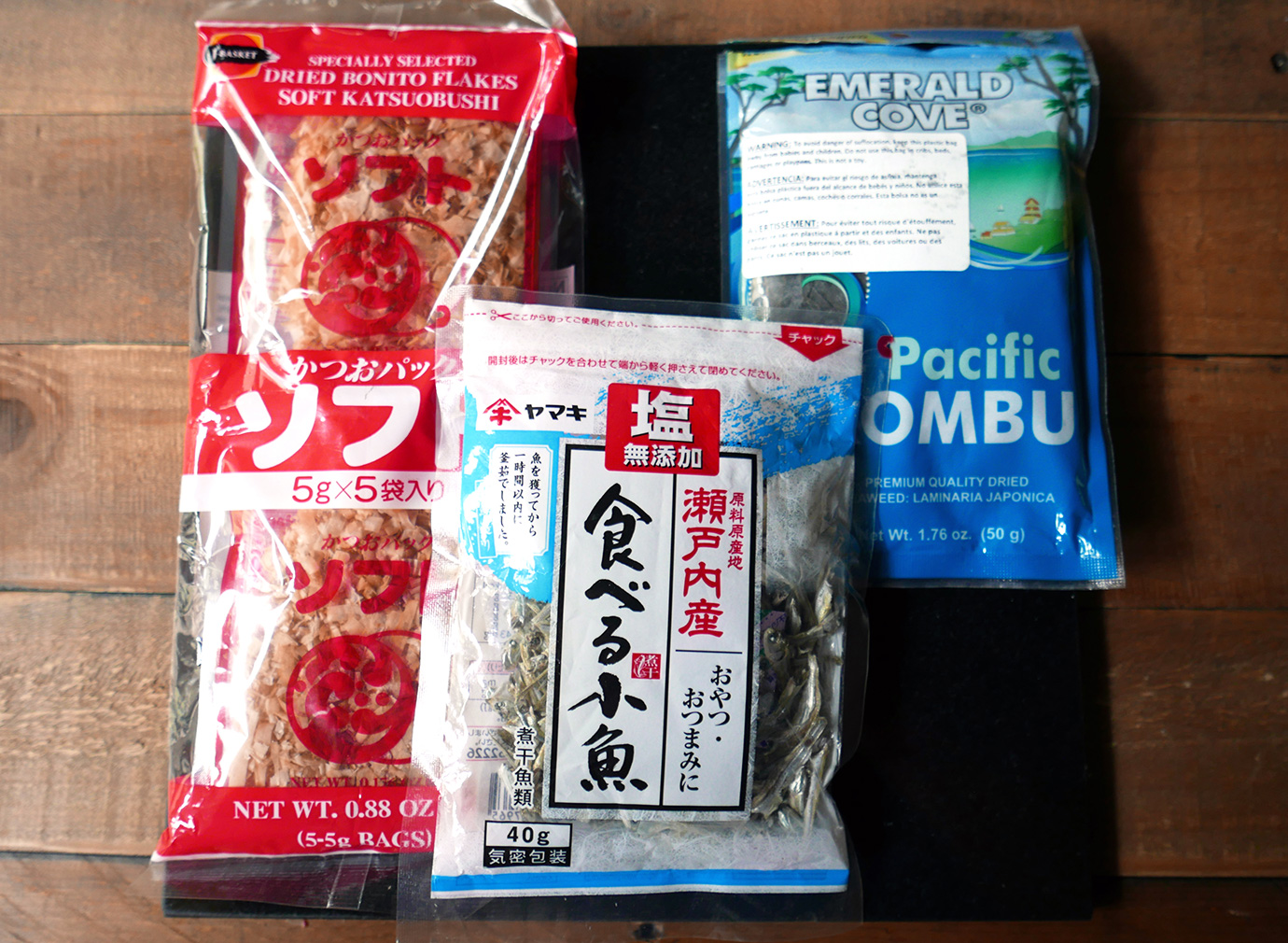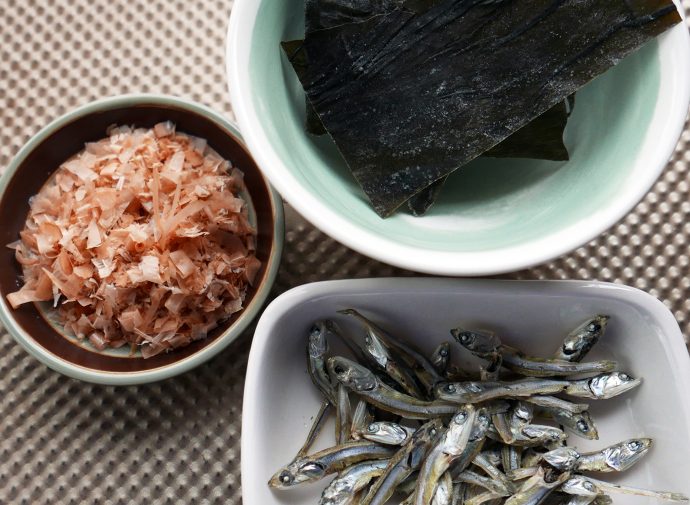In a bowl of ramen soup, there are two main components, the broth and the tare. The broth makes up the vast majority of the liquid in the soup, and contains water with varying amounts of fat, protein, and collagen suspended in it, plus any added aromatic flavors. On its own, the broth would be underwhelming, and while it would have a good mouth feel and meaty flavor, it would be largely devoid of the saltiness and umami for which ramen soup is known. The broth needs tare, a seasoning mixture based on a salty element, with varying parts for added umami. As a beginner, it is very easy to underestimate the amount of salt needed for a great bowl of soup, and early on in my ramen days, I wondered why it never tasted like real ramen. Without tare, a ramen broth is bland at best and tasteless at worst. On its own, a tare would be inedibly salty. Balance is key.
Broths come in two main varieties based on the amount of emulsification of fats. A chintan style stock is clear and light, with less fat and gelatin emulsified from collagen, accomplished by cooking at a lower temperature for less time. There are now also excellent recipes for vegetarian ramen stocks.
Paitan stocks are going to be the opposite: cloudy, rich, and full of emulsified fat and protein, produced by long cooking times at higher temperatures. My favorite ramen, tonkotsu, is a paitan stock.

Tare, the seasoning mixture, provides the real flavor in ramen. It can be soy sauce based (shoyu), salt based (shio) or miso based. Tares have added umami flavor elements such as niboshi (dried baby sardines), katsuobushi (dried bonito fish flakes), kombu (seaweed), mushrooms, or even a dashi made from some of these ingredients. A great ramen is about building layer upon layer of flavor, so tares often have sweet elements added, such as mirin, sake, or sugar.


